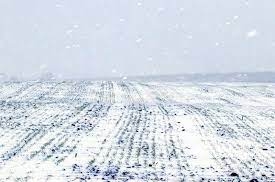Warm winter in the Northern Hemisphere and rainfall deficit in Argentina will affect grain markets in the coming weeks

Warm weather has set in across the main grain growing regions of the Northern Hemisphere, with above-average temperatures and light rainfall helping to build up soil moisture. Heavy rains in Brazil are improving prospects for the upcoming harvest, while the lack of rainfall in Argentina over the next two weeks is causing concern among traders.
The Midwest and Plains of the United States experienced rain and snowfall last week, which will continue this week, which, combined with rising temperatures, will have a positive impact on winter crops.
The rainy season continues in central Brazil , but rainfall in the southern states is below normal, although it remains timely. This weather will continue into next week, favoring the flowering and filling of soybeans and the development of the first corn crop.
A front brought scattered rain to Argentina last week, but only the state of Cordoba received sufficient rainfall. A new front will bring scattered rain throughout the week, with temperatures expected to rise to 28-30 ° C by the end of the week. Drought conditions may occur in some areas of the southeast of the country on soybean and corn crops.
Australia has been experiencing dry weather, which is helping to speed up the wheat and canola harvest, but is having a negative impact on sorghum and cotton crops. Fronts will pass through growing areas in the next two weeks, bringing little precipitation.
Warmer than usual weather continues in Ukraine with light precipitation, which improves soil moisture reserves and crop condition. There is a small layer of snow in some regions, but most fields remain bare, so a drop in temperature next week to -5…-10 ° C will increase the freezing of moisture from the soil.
In the Russian Federation, almost the entire territory is covered with 10-30 cm of snow, which, against the background of temperatures of -5…-10 ° C, creates satisfactory conditions for wintering winter crops, although some analysts have lowered forecasts for the future wheat harvest. In the Krasnodar and Stavropol Territories, temperatures in December exceeded 5 ° C, which, together with insignificant precipitation, contributed to the development of late crops.


